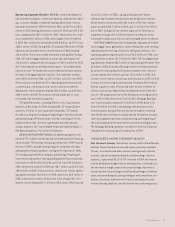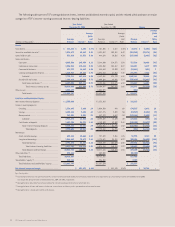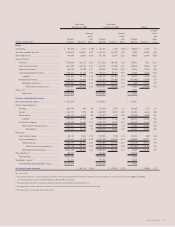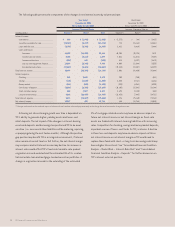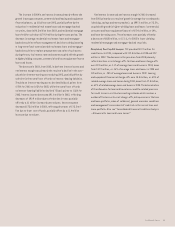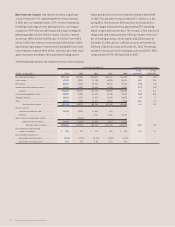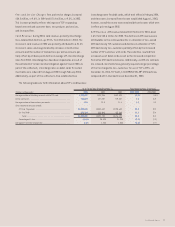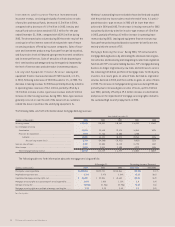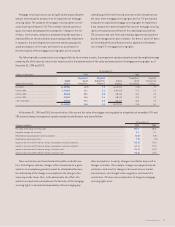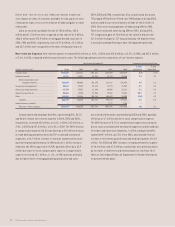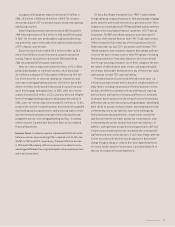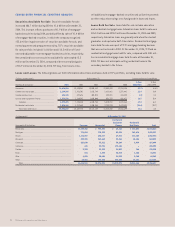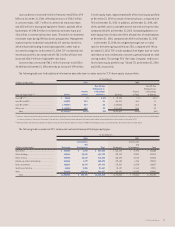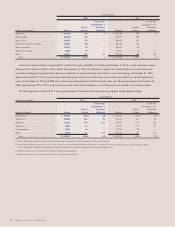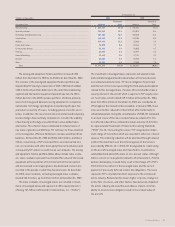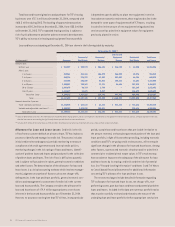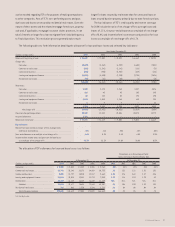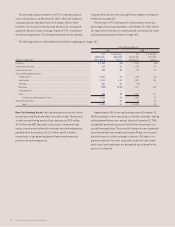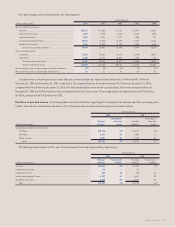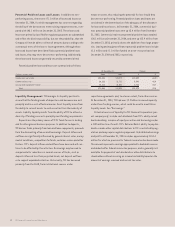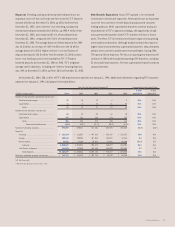TCF Bank 2004 Annual Report Download - page 33
Download and view the complete annual report
Please find page 33 of the 2004 TCF Bank annual report below. You can navigate through the pages in the report by either clicking on the pages listed below, or by using the keyword search tool below to find specific information within the annual report.
2004 Annual Report 31
Occupancy and equipment expenses increased $7.2 million in
2004, $5.3 million in 2003 and $4.4 million in 2002. The increases
were primarily due to TCF’s new branch expansion and retail banking
and leasing activities.
Advertising and promotion expenses increased $817 thousand in
2004 following increases of $3.6 million in 2003 and $985 thousand
in 2002. The increases were attributable to additional advertising
and promotions expenses focused on the acquisition and retention
of TCF’s deposit customer base.
Deposit account losses totaled $22.6 million in 2004, up $3.8
million from 2003 as a result of increased customer transaction
activity. Deposit account losses declined in 2003 and 2002 by
$386 thousand and $30 thousand, respectively.
Other non-interest expense decreased $5 million, or 4%, in 2004,
primarily attributable to real estate expense, which decreased
$3.1 million to a negative $175 thousand in 2004 driven by $3.4 mil-
lion of net recoveries on sales and redemptions of properties and
a decrease in mortgage banking expenses of $2 million due to the
decline in refinance activity and the previously discussed restructur-
ing of the mortgage banking business. In 2003, other non-interest
expense increased $3.8 million, or 3.1%, primarily the result of higher
levels of mortgage banking production and prepayment activity. In
2002, other non-interest expense increased $12.3 million, or 11.3%,
primarily the result of increased expenses associated with expanded
retail banking and leasing operations, card processing expense result-
ing from increased utilization and higher levels of production and
prepayment activity in the mortgage banking business. A summary
of other expense is presented in Note 24 of Notes to Consolidated
Financial Statements.
Income Taxes Income tax expense represented 33.68% of income
before income tax expense during 2004, compared with 34.14% and
34.88% in 2003 and 2002, respectively. The lower effective tax rate
in 2004 and 2003 primarily reflects increases in investments in tax-
advantaged affordable housing limited partnerships and lower state
and local income taxes.
TCF has a Real Estate Investment Trust (“REIT”) and a related
foreign operating company that acquire, hold and manage mortgage
assets and other authorized investments to generate income. These
companies are consolidated with TCF National Bank and are therefore
included in the consolidated financial statements of TCF Financial
Corporation. The REIT and related companies must meet specific
provisions of the Internal Revenue Code (“IRC”) and state tax laws.
If these companies fail to meet any of the required provisions of
Federal and state tax laws, TCF’s tax expense could increase. TCF’s
related companies have included companies that operate under pro-
visions of the laws in certain states in which TCF operates (including
Minnesota and Illinois) that allow deductions for income derived
from foreign operating companies. Use of these companies has been
the subject of administrative audit reviews, and proposed legisla-
tive change. Unfavorable developments in any of these areas could
substantially increase TCF’s state tax liability.
The determination of current and deferred income taxes is a
critical accounting estimate which is based on complex analyses of
many factors including interpretation of Federal and state income
tax laws, the differences between the tax and financial reporting
bases of assets and liabilities (temporary differences), estimates
of amounts due or owed such as the timing of reversal of temporary
differences and current financial accounting standards. Additionally,
there can be no assurances that estimates and interpretations used
in determining income tax liabilities may not be challenged by
Federal and state taxing authorities. Actual results could differ
significantly from the estimates and tax law interpretations used
in determining the current and deferred income tax liabilities. In
addition, under generally accepted accounting principles, deferred
income tax assets and liabilities are recorded at the current prevail-
ing Federal and state income tax rates. If such rates change, deferred
income tax assets and liabilities must be adjusted in the period of
change through a charge or credit to the Consolidated Statements
of Income. Further detail on income taxes is provided in Note 14 of
Notes to Consolidated Financial Statements.


